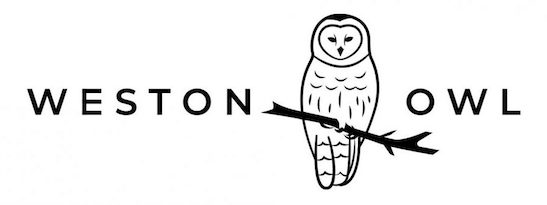History Corner: Schenk’s Pond, Ice Cutting and the Historical Society Hits Facebook

In December 2022, the normally-quiet Weston Historical Society facebook page suddenly sprang to life, with posts appearing several times a week. Stories about downhill skiing at Cat Rock, temperance in Weston (the original dry January), and past Olympic athletes from Weston sucked in this reader, even on vacation in the southern hemisphere.
While some of the stories of pungs and gun clubs were known to this Owl, many of the stories of old Weston families and homes were not. The writing is engaging, the story length inviting, and the photos illustrative of why the discovery of central heating is much appreciated. Starting in January, a feature of “Where is it Wednesday” has included the reading room at the Old Library, the old high school (Brook), and the Golden Ball Tavern. So much fun.
The Owl has suggested to one trustee of WHS that finding a spot for these historical snippets outside of Facebook would be great so people not on the social media maelstrom would also have access. I may have changed my mind though–I love the interaction and commentary that comes from long-time residents who add depth to the stories. So, Weston, time to join the dark side…Facebook.
For your reading pleasure, and to illustrate what you may be missing, is the recent article on Ice Harvesting. And while the Owl has requested permission for re-print, there has been no answer from WHS and so I risk being sued. For you, Weston, I am going to run that risk ’cause this is good stuff. Check it out here if you are on Facebook.
+++
Ice Harvesting
One indicator of consistent cold temperatures in the early 20th century was the cutting of ice, which generally started in January. Ponds froze each year, enough for one, two, and sometimes even three “harvests.” Ten- to 13-inch thicknesses were regularly reported. Farmers and estate owners cut their own ice, but for those who needed to buy it, George Albert Foote was the town’s local supplier.
Ice was cut by hand or with horse-drawn cutters, later replaced by machine cutters. Foote’s ice harvest was a community event, with as many as 25 men needed. Ice cakes were floated to the shore, split apart, and directed onto an inclined ramp where they were pulled out and stored in Foote’s two large wooden ice houses located on Warren Avenue. The ice blocks were packed in layers separated by sawdust and insulated with hay. Foote’s employees would deliver ice in yellow delivery trucks and chipped off chunks to be weighed on the scale on the back of the truck. They then carried the ice to the customer’s “ice box.” Electric refrigerators came into use in the 1930s, but Foote is still listed as an ice dealer in the 1941 directory.
The photo shows estate workers cutting ice on Schenck’s Pond, which was located between the Dean and Schenck estates on Oak Street. Nearly 90 acres, including the pond, were taken for the building of the Norumbega Reservoir. The six foot square granite entrance posts and a curved stone wall marking the original entrance to the Schenck property remain at South Ave and Bittersweet Lane.
+++
And here’s why this is a favorite story of mine: I have passed by those entrance posts dozens of times at Bittersweet and South and wondered why that road got such an amazing entrance when all my road gets is a grassy verge with lots of weeds mixed in from our buried power line renovation (yes, we do win there). Check it out on your next trip out of town.
Thanks, Weston Historical Society, for bringing history to life!

Just in case any of your readers are on Instagram instead, they can find the WHS posts there @westonhistory
Thank you. That is one page I get over to about once a month.